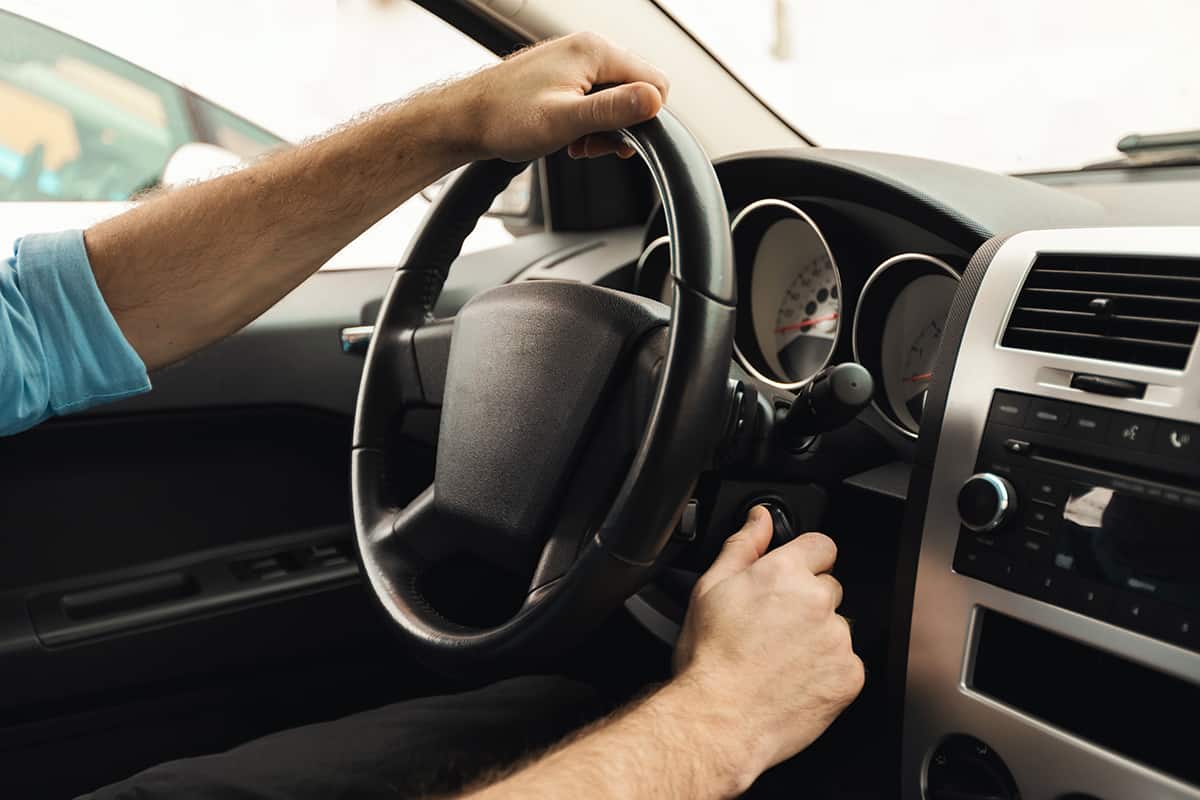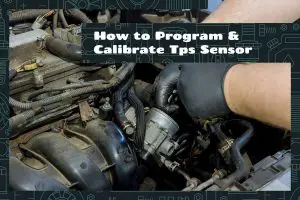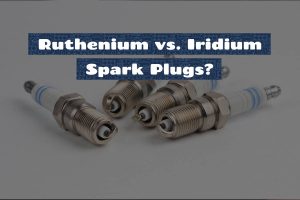Cars, especially older ones, exhibit a wide range of symptoms with varying causes for concern. However, when it shakes at idle and smooths out while driving, you may feel a bit dumbfounded. Shakes or vibrations may appear minor, but they are important indicators of the car’s condition and could be signaling more significant underlying problems.
Several factors can cause your car to shake at idle but smooth out while driving, including:
- Damaged motor mounts
- Faulty spark plugs
- Malfunctioning idle air control valve
- Fuel system problems
- Unbalanced tires
This guide will dive deeper into this common automotive issue. We’ll explore the mechanics of why this shaking occurs at idle and offer actionable tips to address this perplexing condition.
How a Car Works When Idling and Driving
The “idle” refers to the lowest possible RPM (revolutions per minute) at which your car’s engine can sustain operation without stalling. Here, the throttle is mostly closed, and the engine runs on a minimal amount of fuel.
The idle air control valve (IACV) regulates the air that bypasses the throttle to maintain the idle speed. Meanwhile, the engine control unit (ECU), which is your car’s onboard computer, continuously adjusts the IACV to ensure smooth idling.
When you transition from idle to driving, your engine’s state changes significantly. The throttle opens up as you press the accelerator, allowing more air into the engine. In response, the ECU increases the fuel supply to maintain the optimal air-fuel mixture. This fuel-air mix is ignited by the spark plugs, which drives the engine and, in turn, the wheels.
The act of driving puts the whole vehicle in a state of harmonious operation where the engine, transmission, suspension, and tires all work together. Any fault or failure in this interconnected system could manifest as vibrations or shakes while driving.
You can generally drive your car if it shakes at idle but smooths out while driving. However, this condition is not normal and could indicate underlying mechanical problems. Even if the car operates fine while driving, you should resolve the cause of the shaking at idle to prevent potential future complications.
The Phenomenon of Car Shakes at Idle but Smooths Out While Driving
Some issues that cause shaking at idle might be less noticeable or seem to disappear entirely due to this complex interplay of forces and systems.
Engine Load and Balance
When a car is idle, the engine is at its minimum operating speed. It is here that even the smallest mechanical imperfections or unbalanced forces can cause noticeable vibrations or shakes.
However, as you shift from an idle state to driving, the dynamics of your engine drastically change. The engine load increases, and the RPM rises as more fuel and air enter the system. This increased activity can sometimes help balance out the previously noticeable shakes or vibrations.
Vehicle Speed and Vibration Damping
The speed of the vehicle also plays a part in dampening vibrations. As a car accelerates, the increased RPMs and resulting forces might help to smooth out the imbalances that cause vibrations. Similarly, the suspension system, designed to absorb shocks and vibrations from the road, can also help to minimize the perception of shaking at higher speeds.
This isn’t to say that the problem causing the shakes at idle has magically disappeared while driving. Rather, the issue might just be less perceptible due to the increased engine activity and speed of the vehicle.
Common Reasons for Car Shakes at Idle (and Solutions)

Now that you have a basic understanding of the “idle shakes,” let’s dig a bit deeper by exploring the various causes of this phenomenon and what you can do to resolve the issue.
1. Faulty Spark Plugs
Spark plugs ignite the fuel-air mixture. However, worn-out or damaged spark plugs can cause misfires, leading to vibrations or shaking when the car is idle. Misfires disrupt the engine’s balance, causing it to shake due to uneven power distribution.
Solution: Regularly inspect your spark plugs for wear and tear. If they’re damaged or have reached their lifespan (at least every 30,000 miles), replace them to restore smooth engine operation.
2. Damaged Motor Mounts
Motor mounts, also known as engine mounts, are designed to secure the engine and transmission to your vehicle’s chassis. They also absorb vibrations and shocks from the engine. When these mounts are damaged, they can’t efficiently absorb the engine vibrations, leading to noticeable shakes, especially at idle.
Solution: If you notice excessive shaking, especially when starting your car or accelerating, have your motor mounts inspected by a professional. Replacement is usually the best course of action if they’re damaged.
3. Malfunctioning Idle Air Control Valve
The idle air control valve (IACV) manages the engine’s air intake while it’s idle. A malfunctioning IACV can disrupt the air-fuel balance, causing the engine to vibrate or shake at idle.
Solution: Cleaning or Resetting the IACV often solves the problem. However, if it’s still faulty, you may need to replace it.
4. Fuel System Problems
Issues within the fuel system, such as clogged fuel lines, dirty fuel injectors, or a failing fuel pump, can disrupt the optimal fuel-air mixture. This disruption can lead to engine misfires, causing your car to shake at idle.
Solution: Fuel injector cleaners can help maintain fuel injectors, while a professional should address severe clogs or a failing fuel pump.
5. Unbalanced Tires
While more common for shaking during driving, unbalanced tires can also cause vibrations noticeable at idle, especially in cars with softer suspensions.
Solution: Regular tire balancing and alignment checks can help identify and rectify this problem. Replace tires if they’re worn unevenly.
Maintenance Tips to Prevent Car Shakes
Whether you’re afraid of your car shaking at idle and smoothing out while driving or if you’ve already corrected the problem, it’s worth conducting basic maintenance to prevent this problem from occurring in the future.
Regular Engine Check-Ups
Your car’s engine is its heart, and it needs regular check-ups to ensure it’s functioning optimally. Routine maintenance includes checking for wear on belts, inspecting spark plugs for damage or carbon deposits, and keeping an eye on fluid levels.
Schedule regular engine maintenance with a trusted mechanic. Early diagnosis of potential issues can save you money and prevent problems like car shakes from worsening over time.
Keep Your Fuel System Clean
A clean fuel system is essential for maintaining the optimal air-fuel mixture that your engine needs to run smoothly. Over time, deposits can build up and clog fuel injectors, leading to rough idling and car shakes.
Use a quality fuel injector cleaner periodically, as your vehicle’s manufacturer recommends, to keep your fuel system clean and functioning optimally.
Inspect and Replace Motor Mounts if Necessary
Motor mounts secure your engine to the car’s frame and absorb engine vibrations. Over time, these mounts can wear out or become damaged, leading to noticeable vibrations at idle.
Regularly inspect your motor mounts for any signs of wear or damage. If you notice excessive vibrations, especially during acceleration, have a professional check the mounts.
Regular Tire Maintenance
While not as directly linked to engine operation as the previous points, maintaining your tires can significantly impact your overall driving experience. Unbalanced tires can lead to vibrations that are more noticeable at higher speeds but can sometimes be felt at idle as well.
Ensure your tires are regularly balanced and aligned every six months and that they are inflated to the correct levels. Your car’s TPMS (if available) should help you with over or underinflation.







